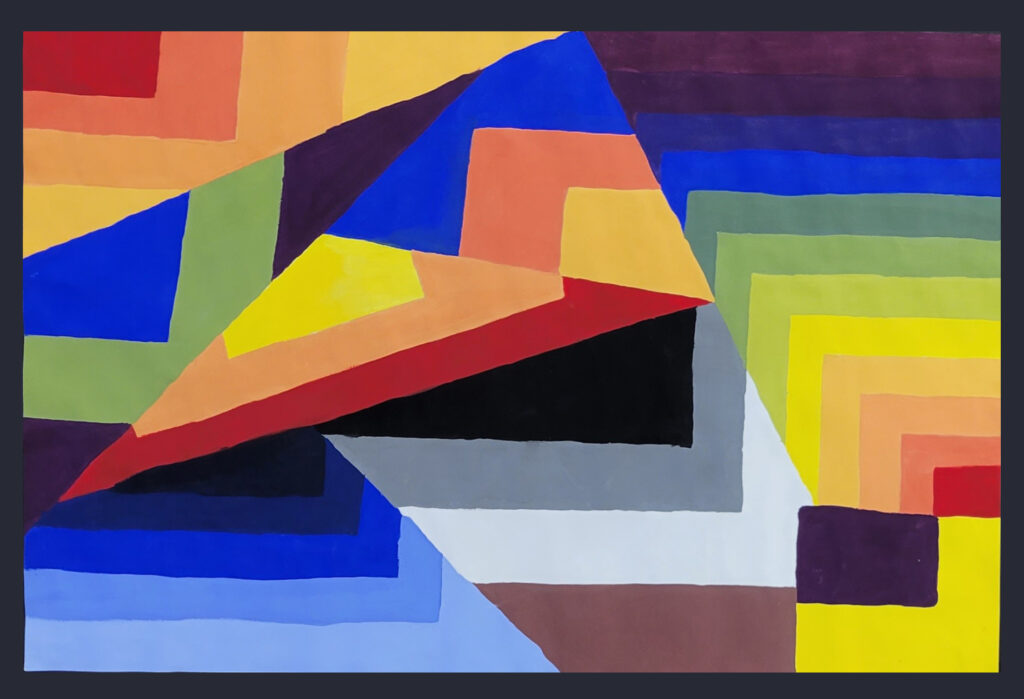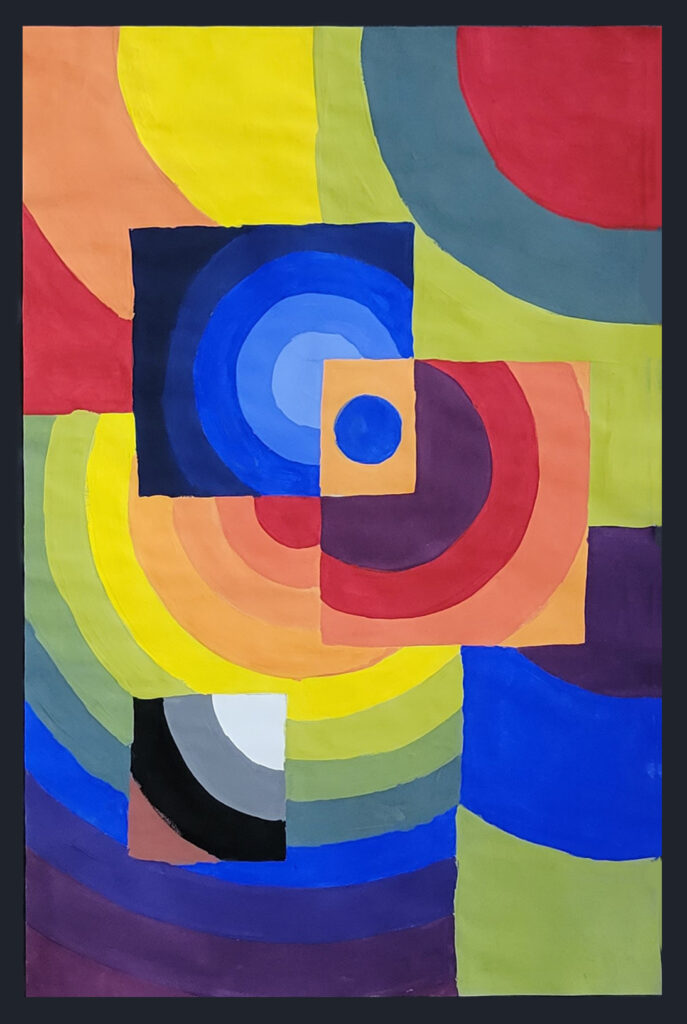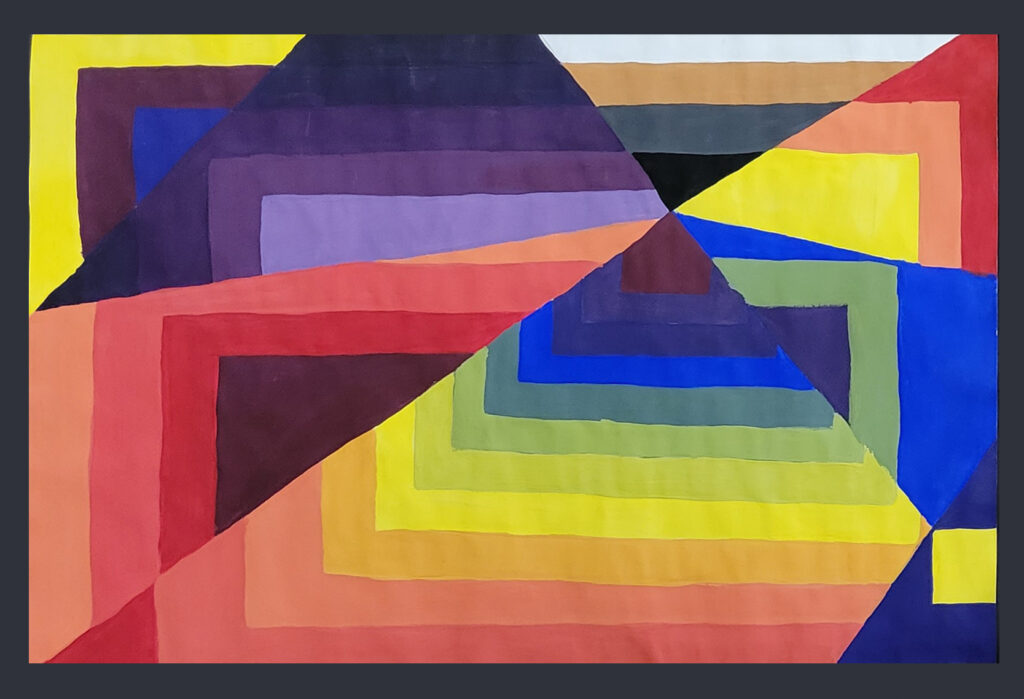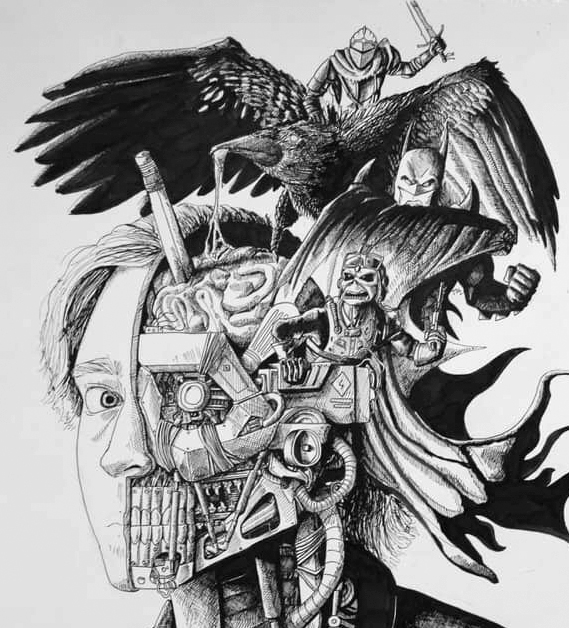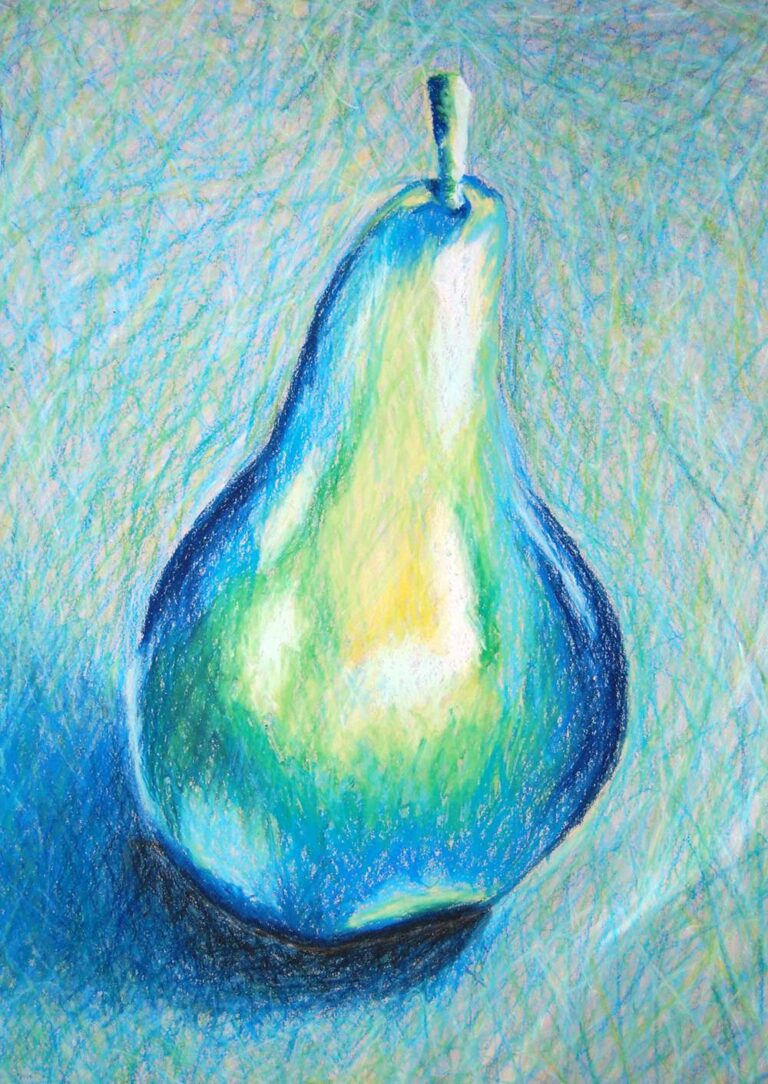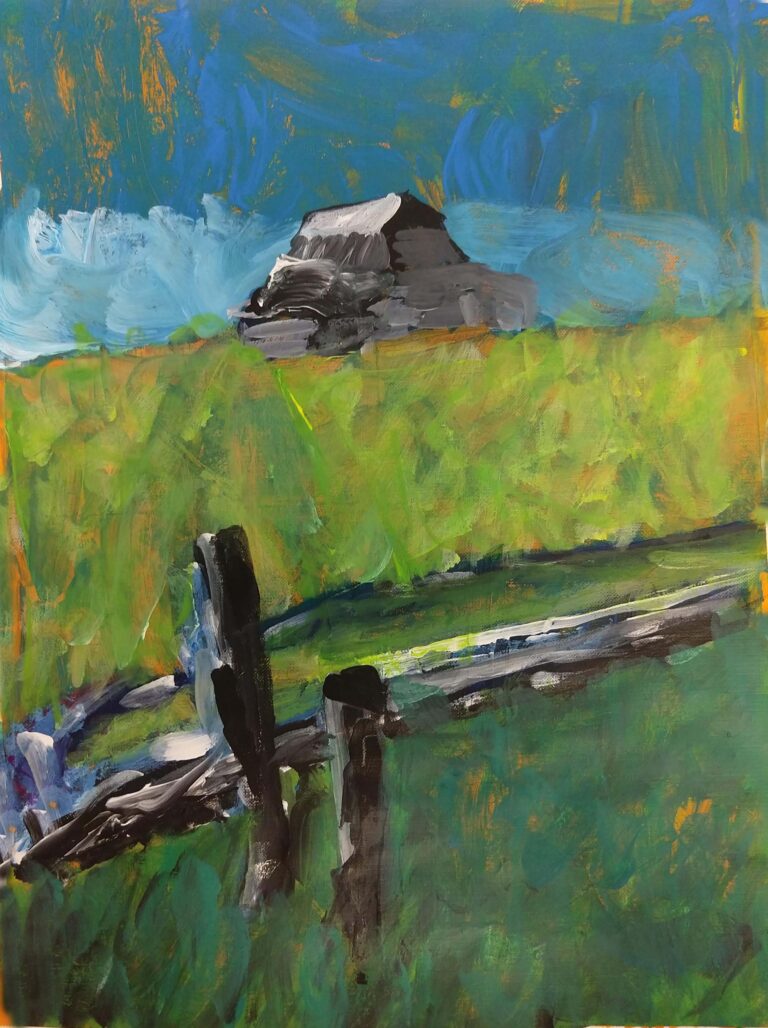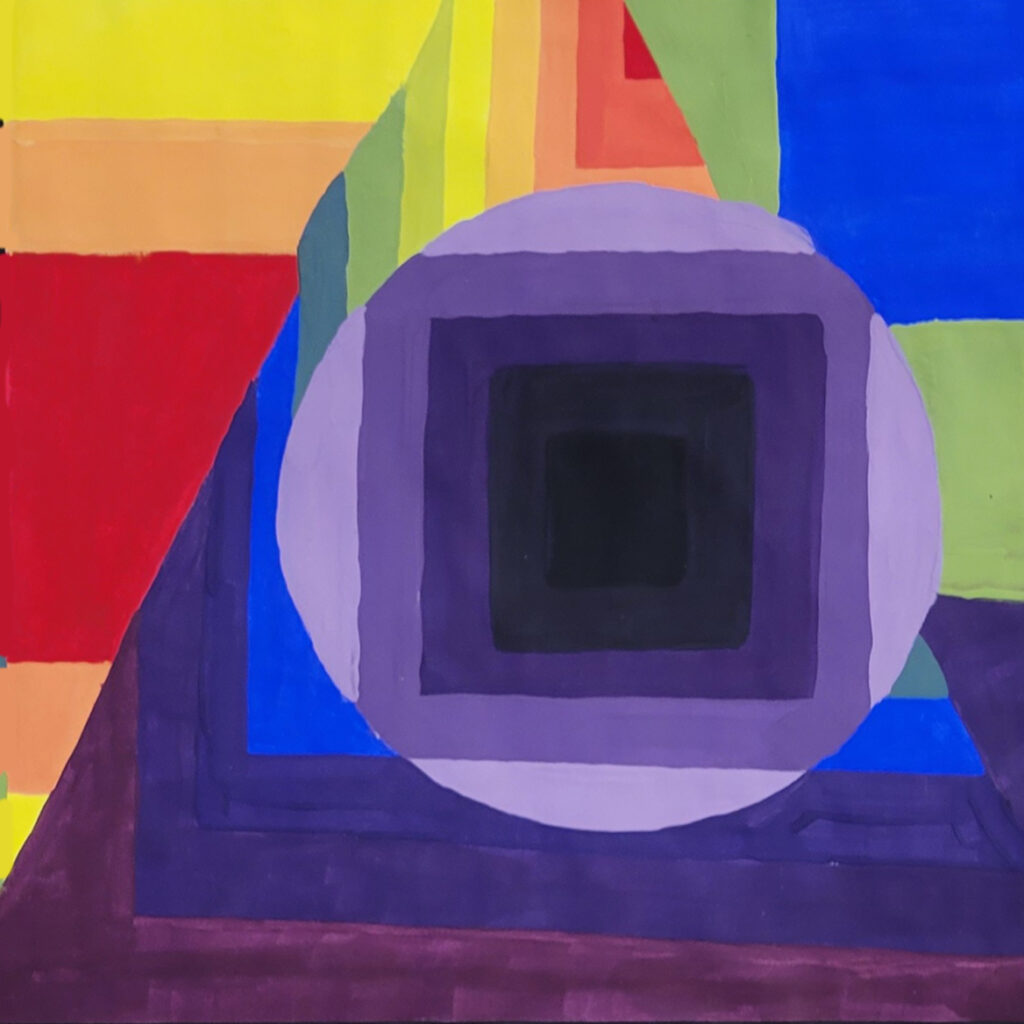
Grade Level
5-6, 7-8, 9-10Duration
Ten classes (50 minutes)
Materials
12×18 white paper, pencils, erasers, rulers, protractors, compasses, circle templates, tempera paint, paint brushes, water cups, newspaper
Media
Tempera Paint
Lesson Objectives
The student will…
- engage in learning and understanding new vocabulary
- analyze and write about Sonia Delaunay’s work
- complete a homework assignment of practicing using the compass
- complete a color-mixing activity sheet
- create artwork that exhibits Orphism
- demonstrate color mixing through the use of primary, secondary, and intermediate colors
- demonstrate good craftsmanship
- use art materials properly
- take a quiz on vocabulary
Introductory Activity
Before embarking on this project, the teacher talked a lot about craftsmanship and how it can make or break an artwork. She demonstrates how to use a paintbrush, as many of her students have never or barely ever painted.
- The teacher will explain to the students that they will be learning about color science along with a well-known artist and style of painting. The lesson will start with introducing vocabulary that goes along with the project.
- Next, the teacher will introduce the artist Sonia Delaunay and her work. The students will engage in a group activity of analyzing her artwork by answering questions about it.
- The teacher will lead a discussion about Orphism and how the student will create artwork in that style.
Lesson Process
- The student will then create a sketch. The students will draw 3 lines, using a ruler, anywhere in any direction to break up their paper. From these lines, they will draw circles coming off of them as to be split up. They will use templates, protractors, and compasses to create circles. We will recap Sonia Delaunay’s artwork during this time.
- The student will engage in a color-mixing activity sheet before they paint their final artwork. The sheet will guide them when they begin to paint their final papers. The teacher will introduce the color wheel and color schemes, including analogous, warm, cool, monochromatic, complementary, neutral, and split complementary colors.
The below paintbrush cleaning expectations should be covered:- Rub on the bottom of the water cup
- Rub on the edge of the cup
- wipe the brush on the newspaper
- Do not put fingers on bristles
- The teacher will have a discussion/demonstration about color mixing and how to “read” the color wheel. Before students paint, they will label their final artwork with where they want the colors to go. Students will create eight color sets (color wheel, analogous colors, warm colors, cool colors, monochromatic colors, complementary colors, neutral colors, and split complementary colors). In their designs, students break their paper into eight sections, label each section with the color set the student wants to paint it, and then choose a shape to nest within the sections. Once they draw the nested shape, they label those with the colors they will paint. Students are only to use the colors specified; they need to stay in the lines (craftsmanship), and there should be no overlapping colors.
- The students will engage in a vocabulary quiz during the assigned project.
Vocabulary
Orphism, Color Wheel, Color Scheme, Primary colors, Secondary colors, Intermediate colors, Hue, Color, Pattern, BalanceResources
Sonia Delaunay’s work
Sonia Delaunay Introduction
Basic Color Theory Resource
Project Assessment
Vocabulary Terms
Sonia Delaunay, Analyzing Art
Sonia Delaunay, Homework
Sonia Delaunay, Worksheet
Sonia Delaunay Quiz
Sonia Delaunay Quiz Key
Teacher Slide Show
Author & Website/Blog
Jessica Godfrey


